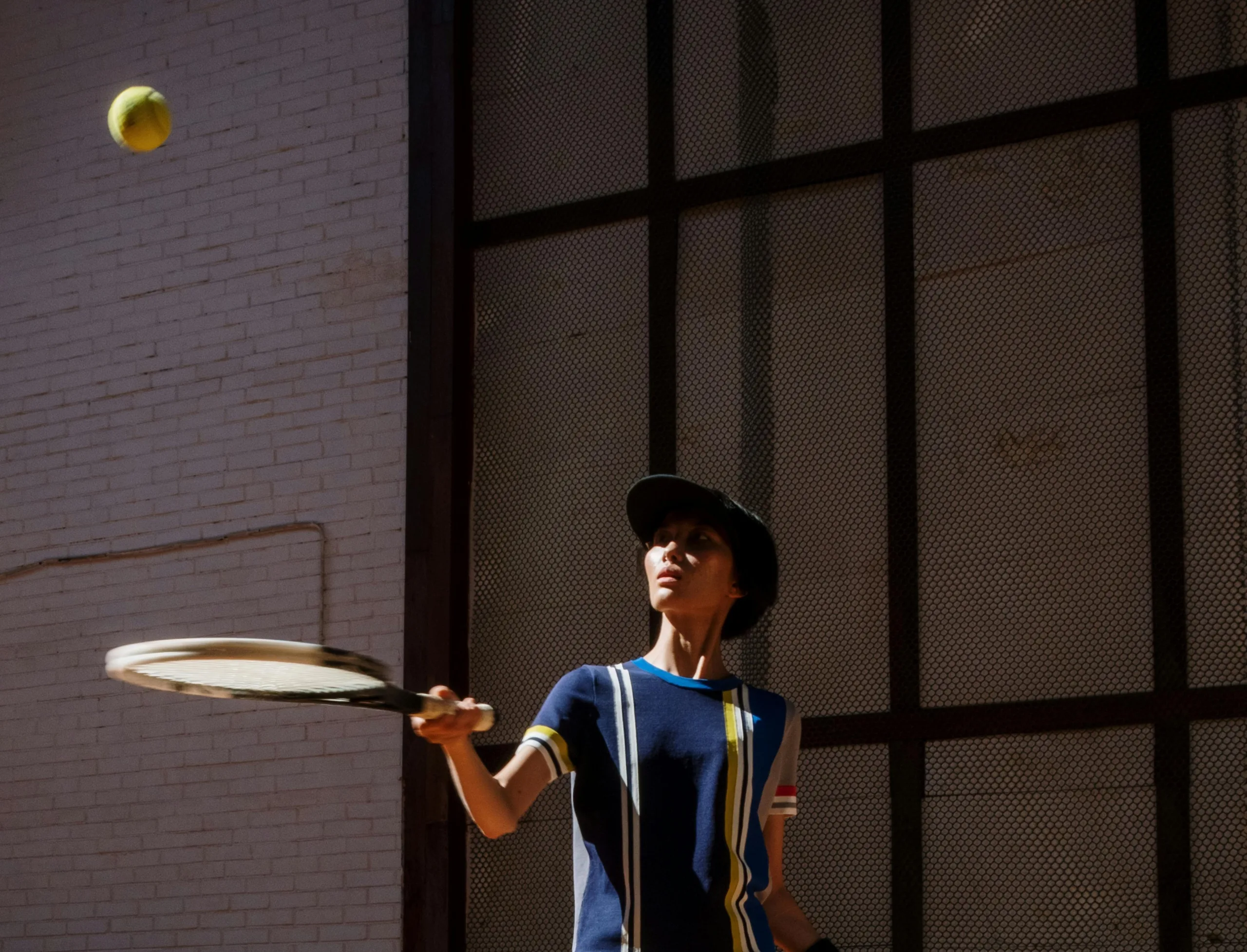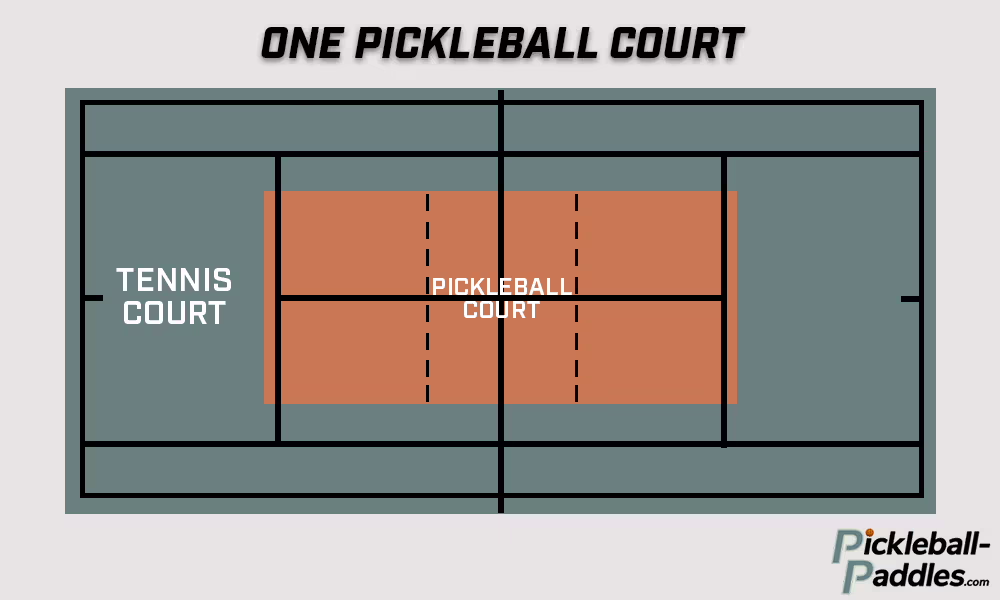
Pickleball Vs Tennis: Exploring the Differences
Racquet sports statistics vary drastically from one publication to the next, but let’s just say the number of pickleball players and tennis players in the United States alone is anywhere between 30 to 50 million recreational or professional players. And while a grand assumption is that there has been a line drawn on the courts – you either play pickleball or you play tennis – a number of people enjoy playing both, despite some of their key differences.
If you have become fascinated by these two sports and the growing popularity of pickleball, keep reading to learn more of the nuances between pickleball vs. tennis so you can enhance your appreciation and skill at each game, including:
- A Brief History of Both Sports
- Key Differences:
- Equipment and Gear
- Court Size and Surfaces
- Rules and Scoring
- Playing Techniques and Strategies
- Physical Demands and Fitness Benefits
- Social and Community Aspects
- Popularity and Demographics
A Brief History of Tennis vs. Pickleball
Tennis
Tennis has a long history, beginning first in France in the 12th century and then expanding across the globe to today. History Timelines provides a good breakdown of the sports history, which you can see highlighted below:
History of Tennis
- 12th century – Created in France where it was played by hitting the ball with the palm of the hand
- 1877 – First Wimbledon tennis tournament held in London, England
- 1881 – First US Open, known then as the US National Championship, in Rhode Island
- 1913 – International Tennis Federation is formed to create standardized rules and regulations for the game
- 1968 – Open Era of tennis where professional players could compete in major tournaments alongside amateurs. Led to the growth of the sport.
- 1973 – Billie Jean King played against Bobby Riggs and won, helping promote gender equality in sports
- Today – Continued rise of major tennis players dominating the sport
Pickleball
ONIX, a leading manufacturer of pickleball paddles and other gear, provides a great historical summary of the creation and growth of pickleball, highlighted below:
History of Pickleball
- 1965 – Pickleball is born
- 1967 – First permanent backyard pickleball court is constructed
- 1972 – Corporation was formed to protect the sport
- 1975 – Pickleball is written about for the first time by the National Observer
- 1976 – First known tournament in the world is held in Tukwila, Washington
- 1984 – First pickleball rulebook is published by the United States Amateur Pickleball Association
- 1990 – Pickleball is being played in all 50 states
- 2001 – Pickleball is introduced in the Arizona Senior Olympics
- 2005 – USA Pickleball Association is established in America
- 2009 – First USAPA National Tournament is held
- Today – USAPA has more than 40,000 members and pickleball is noted as one of the fastest growing sports in the United States
Key Differences That Make Each Sport Unique
Equipment and Gear

There are a few notable differences between each sport when it comes to the design of equipment and gear, specifically for the racquet or paddles, balls, and nets.
Tennis
When playing tennis, players use a tennis racquet, which is strung, providing more power and spin capabilities for ball bounces, and can be up to 29 inches long. The tennis ball is heavier than a pickleball and made of felt-covered rubber, pressurized to bounce effectively on the court and contributing to a different style and pace of play than pickleball.
Pickleball
Pickleball uses a solid paddle, often made of wood, composite, or graphite. It is smaller than a tennis racquet but larger than a ping-pong paddle. The plastic ball is similar to a Wiffle ball, with holes that affect its bounce and movement. It is lighter than a tennis ball.
Court Size and Surfaces

Img credit: Pickleball-Paddles.com
If you’re building a backyard court or are curious about properly sized courts you’ll be playing on, here is a breakdown of court dimensions and surfaces for pickleball vs. tennis.
Tennis
A standard tennis court is about 78 feet in length and 27 feet wide for singles matches, extending to 36 feet wide for doubles. The net is placed at a height of 3.5 feet at the post and 3 feet in the center. Tennis courts can be made of grass, clay, or other hard surfaces, each surface impacting the tennis ball’s speed and bounce.
Pickleball
A pickleball court is smaller than a tennis court, about the size of a badminton court. A pickleball court measures 44 feet in length and 20 feet in width. The pickleball net’s height is 34 inches at the center. Pickleball courts can be many different surface types, including acrylic, concrete, and specialty rubber/plastic courts, providing a hard, even surface.
Rules and Scoring
Both sports have unique rules and scoring systems, which impacts each sport’s pace and strategy.
Tennis
Tennis games require a more complex scoring system than pickleball (love, 15, 30, 40, and game). A match is typically played in best-of-three or best-of-five sets, with each set requiring a player to win at least six games with a margin of two games.
In addition to the scoring system, rules are also different. When playing tennis, the person serving stands behind the baseline, serving overhand and diagonally into the opponent’s service box. The serving team gets two serves to start a point. If both serves fail, it’s a double fault, and the opposing player wins the point.
Pickleball
Pickleball utilizes a straightforward point system. The first team or player to reach 11 points with a lead of at least two points wins the game. Only the serving side of the court can score points, and matches are often played best out of three pickleball games.
Additionally, serving is exclusively played underhand to the other side of the net, and it must clear the non-volley zone, meaning the bounce rule is that it cannot land in the kitchen and must hit the diagonal service box. Players get only one pickleball serve attempt, and double faults don’t exist.
Furthermore, one of the most distinctive aspects of pickleball is the non-volley zone, or “the kitchen.” This area extends seven feet from the net on both sides, and players cannot volley (hit the ball in the air) from within this zone. This rule creates a unique dynamic not found in tennis, where players can volley from anywhere on the court. The strategy in pickleball often involves ‘dinking’—a soft, controlled shot that lands in the opponent’s non-volley zone, contrasting with the more aggressive volleys in tennis.
Learn more about pickleball basics like scoring, etiquette, and winning strategies.
Playing Techniques and Strategies
Both sports require tactical thinking, but the style of play and physical demands are distinct.
Tennis
Tennis is known for its powerful serves, volleys, and groundstrokes, emphasizing speed, power, and athleticism. Players often use spin, slice, and topspin to maneuver their opponents and win points.
Pickleball
Due to the smaller court and equipment differences, pickleball generally has a slower pace than tennis. The game relies heavily on strategy, placement, and patience over power, particularly in doubles play.
Physical Demands and Fitness Benefits
This is also a key differentiator, which impacts the target demographics for each sport, as we’ll discuss later.
Tennis
Tennis requires more running and agility, making it physically demanding but also rewarding for those seeking a more intense workout.
Pickleball
Pickleball’s smaller court and underhand serving make it more accessible, especially for those with limited mobility or those new to racket sports.
Social and Community Aspects
Both pickleball and tennis offer excellent opportunities for socializing, but one is more community and recreationally driven than the other.
Tennis
Tennis has a longstanding history and international acclaim, often making it a more competitive sport to participate in.
Pickleball
Pickleball has a reputation for being particularly community-oriented. Its smaller courts and the social nature of doubles play make it easy to chat and interact with others, emphasizing its accessibility and fun.
Popularity and Demographics
Tennis
Youth, ages 6 – 17, and young adults, ages 18 – 34, have been the primary demographic for the sport when it comes to competition and tournaments. However, it remains popular among adults, ages 35 – 54, who enjoy playing recreationally or even competitively. Seniors are less active in tennis.
Pickleball
With its low barrier to entry for beginners, this sport became very popular among older adults and seniors, with a significant portion of players being retirees. They enjoy the social and low-impact nature of the game so they can maintain an active lifestyle with less physical strain.
That being said, it has increasingly become more popular among adults, ages 35 – 54, and youth, ages 18 – 34, for light exercise and a fun recreational activity.
While dominated slightly by males, efforts to promote the sport among women have increased their participation in the game.
Conclusion
Tennis and pickleball are both uniquely exciting sports, each offering different opportunities to showcase strategy and athleticism. Understanding the biggest differences between pickleball vs tennis is helpful, whether you’re a seasoned player in one sport considering the other, or a newcomer deciding which to try. Each offers its own unique challenges and joys, and both can be incredibly rewarding. We hope this comparison has been helpful and will inspire you to go to the court to see which sport is the best for you. And who knows, maybe it’s both!
Legendary Sports Construction specializes in building both pickleball and tennis courts, understanding the nuances that make each sport special. Whether you’re looking to build a court for the strategic, social game of pickleball or the fast-paced, athletic game of tennis, we have the expertise to create the perfect court for you.
Curious about how a pickleball or tennis court could enhance your home or community space? Considering the pickleball vs tennis debate for your next sports construction project? Contact Us for a free quote and let’s discuss how we can bring your sports construction dreams to life.